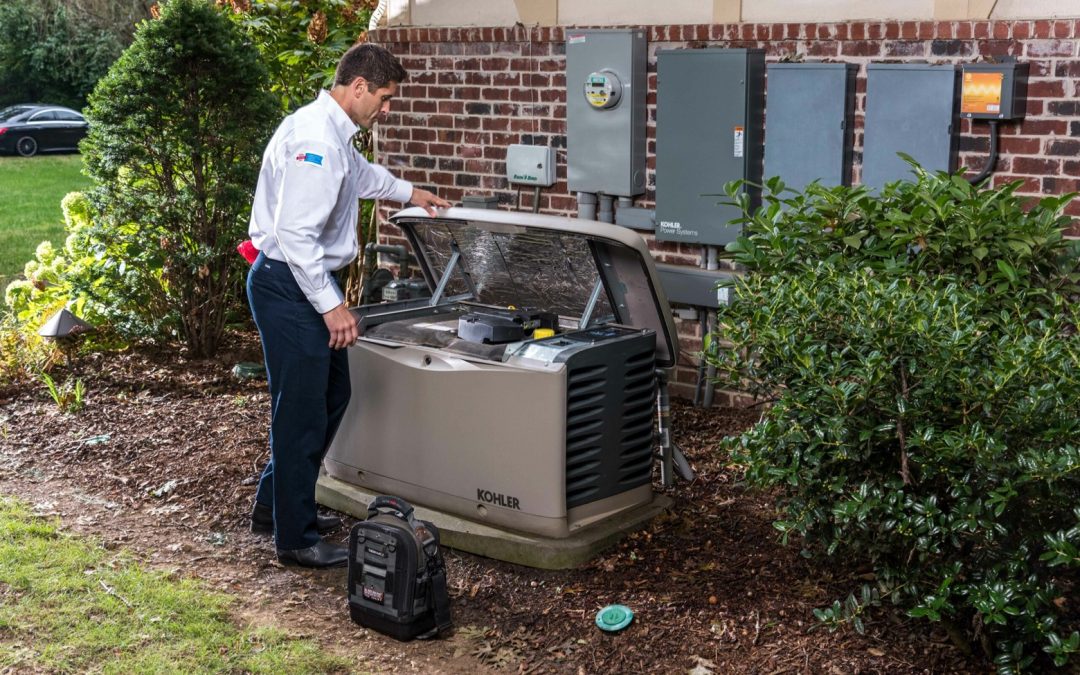When people experience a power outage without the help of a generator, their homes are exposed to the environment. Their refrigerator and freezer cease to function, the HVAC system shuts down, and any devices that depend on power are rendered useless. In addition, they can experience serious plumbing issues during a winter power outage when the pipes freeze. Medical, financial, and communication industries are required to have continuous power to meet their regulatory requirements. Emergency generators have met their needs. In the residential arena, people suffer blackouts without a safety net.
Power
Investing in a standby generator, an independent source of power used when the main power supply is disrupted, offers the convenience and efficiency of an emergency generator. Standby generators prevent discomfort, protect the home from damage, and stop unexpected expenses that can happen when the power goes out.
Portable
Standby generators are better than portable generators. Portable generators run on a rechargeable battery or fuel which limits their time and breathe of function. Portable generators need fuel stored outside the home to prevent fumes from operation and Carbon Dioxide poisoning in the home. Fuel is a fire hazard. Usage of candles and fire pits should not be near fuel storage area. Portable generators need storage when not in use. Manually started when needed. Rain and snow can seep into the portable generator, causing corrosion or electrocution. So never operate a portable in rain, snow, or any severe weather.
Standby
Standby generators installed so they run automatically. Powerful enough to service the entire home. Standby generators run on fuel from your natural gas line. Standby generators do not release less fumes than a portable generator. Standby generators are stationary and hooked into the home’s power grid. A whole-home standby generator will kick on when you need it so you can keep the essentials functioning.
Cold Weather Kits
In Northern climates where the temperature drops below 10 degrees, freezing weather kits are essential to smooth operation of the standby generator. The kit includes a battery warmer and oil heater. The thermostatically controlled battery warmer sits under the battery, turns on automatically when the temperature drops below 40 degrees, and prevents dead batteries from freezing weather. You just set it and forget it, since it operates automatically. The oil heater prevents slippery lubricant from turning into friction fighting sludge. The oil heater warms the crank case automatically preventing the oil from turning into gelatin. Generators filled with 10W-30 oil at the factory, but manufacturers recommend changing to 5W-30 synthetic oil when adding a heater. Get professional advice before selecting a freezing weather kit because it needs to be compatible with your brand standby generator.
Snow Hood
A snow hood will prevent damage to the standby generator. When the air intake is clear, the generator can operate efficiently and cool the engine. Generators covered in snow; the intake cannot do its job. This will cause your engine to overheat and your generator to fail. To ensure this does not happen, periodically clear snow and ice from your generator or use a snow hood.
Designed with both noise reduction and weather protection in mind, snow hood enclosures used in applications where noise and weather are a concern. Snow hoods built to withstand permanent outdoor storage and long-term use of your generator, sheltering it from rain, snow, people, or blowing dirt and debris.

